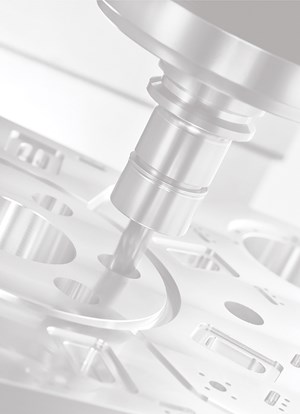Okuma HMC Provides Enhanced Cybersecurity, Versatility
Okuma America Corp. introduces the MA-4000H CNC horizontal machining center, designed with embedded cybersecurity features and “sludgeless tank” chip and coolant management technology.
Share



Okuma America Corp.’s MA-4000H CNC horizontal machining center (HMC) features a large machining area and spindle power and speed for maximum efficiency and productivity.
The MA-4000H is designed for heavy, high-performance metal machining for both mass production and variable-volume production runs, made possible by its range of available spindle options. It is said to maintain a compact, space-saving footprint. The MA-4000H is also equipped with Okuma’s “sludgeless tank” chip and coolant management technology, which can improve chip discharge and prevent chip accumulation to optimize productivity during intense machining.
Additionally, the MA-4000H contains Okuma’s OSP-P500 CNC control. The control’s dual-core processor and advanced capabilities, paired with the MA-4000H’s rigidity, are said to enable maximum accuracy and machining performance. Additional features of the OSP-P500 control include:
- Windows-based, open-architecture platform for simplified integration to applications on the Okuma app store and beyond.
- Embedded cybersecurity features to protect operations and data.
- On-board energy management and green machining capabilities with Okuma’s thermo-friendly concept & ECO suite plus functionality.
Key specs of the MA-4000H include:
- Max machining travels: 22.05" × 25.59" × 26.97"
- Rotary pallet size: 15.7" × 15.7"
- Speed range: 15,000 rpm (12,000 rpm, 20,000 rpm)
- Spindle power: 51 hp
- Rapid traverse: 2,362 ipm
Related Content
-
4 Tips for Staying Profitable in the Face of Change
After more than 40 years in business, this shop has learned how to adapt to stay profitable.
-
A History of Precision: The Invention and Evolution of Swiss-Style Machining
In the late 1800s, a new technology — Swiss-type machines — emerged to serve Switzerland’s growing watchmaking industry. Today, Swiss-machined parts are ubiquitous, and there’s a good reason for that: No other machining technology can produce tiny, complex components more efficiently or at higher quality.
-
Ballbar Testing Benefits Low-Volume Manufacturing
Thanks to ballbar testing with a Renishaw QC20-W, the Autodesk Technology Centers now have more confidence in their machine tools.




















